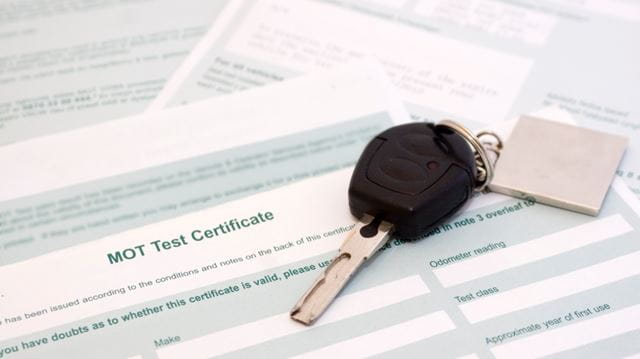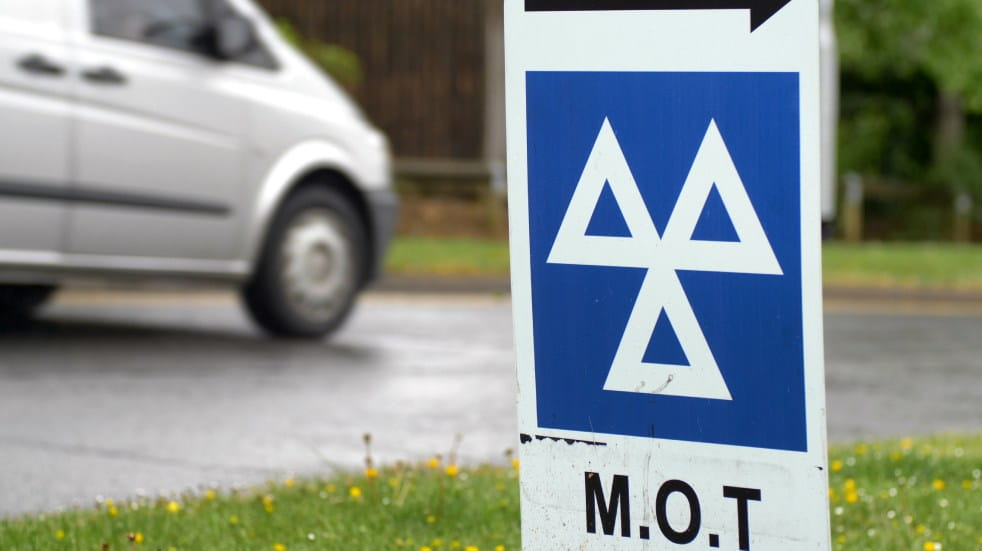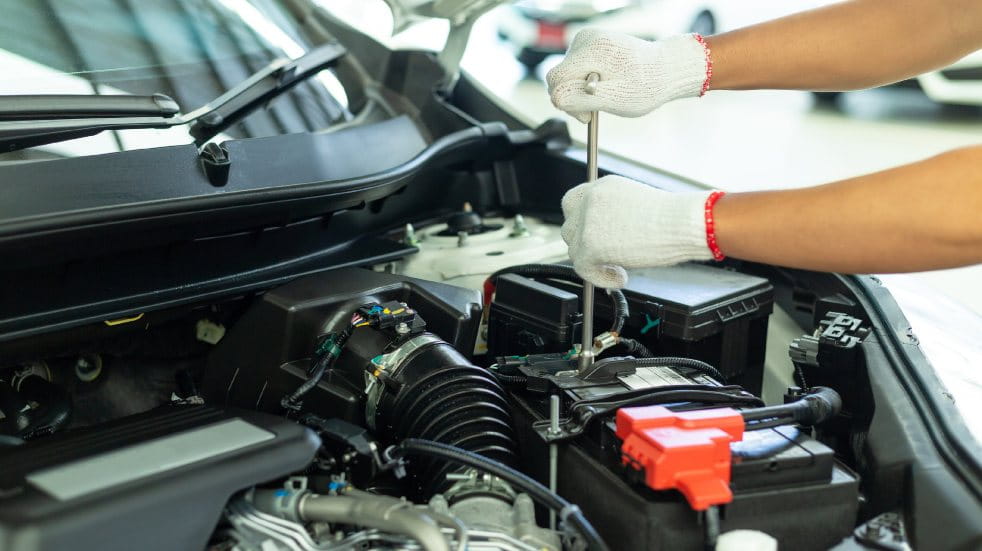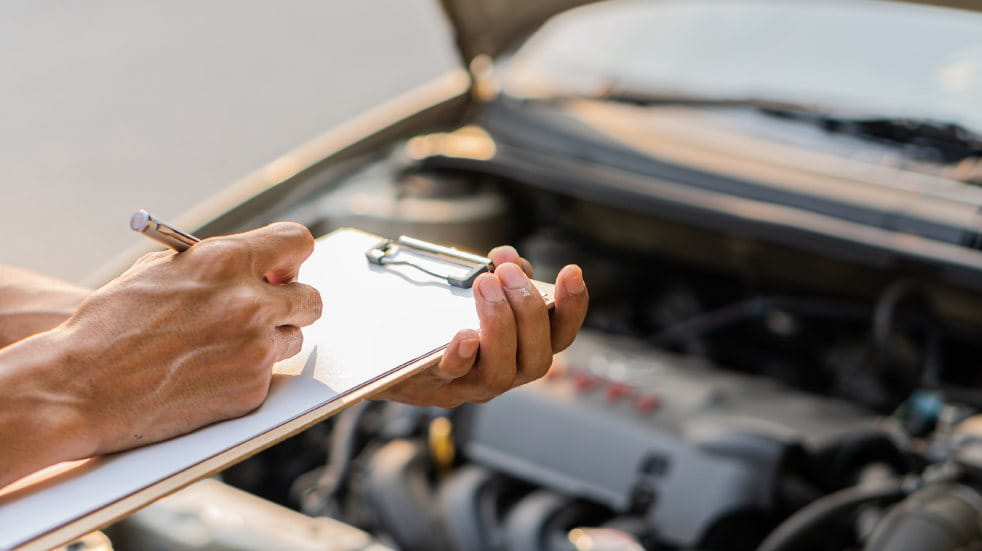
There are a surprising number of pitfalls associated with an getting an MOT, here we take a look at some of the most common questions associated with the annual vehicle test
For most of us, our vehicle’s MOT test signifies that one day a year when we have to hope, with fingers crossed, that it passes without the need for a hefty repair bill.
What is the MOT really for?

The MOT is to check that your car is in a good enough working condition to drive on public highways. So, really, it’s to make sure that you, your passengers and other road users are not in any danger from your vehicle or anyone else’s because of poor maintenance.
Once your vehicle is over three years old, it needs an MOT certificate once a year. You’ll need that piece of paper if you want to use it on public highways, or need to sell it.
What if I miss the MOT’s expiry date?
Without the MOT certificate, and if your vehicle isn’t declared off-road, then you risk a wallet stinging fine – typically £100, but up to £2500 if the car is in a particularly dangerous condition. If you’re driving a van, the fine is unlimited.
How much should an MOT cost?

The good news is that if you keep your vehicle regularly serviced, then your mechanic will keep on top of any issues as they come up. If that’s the case, then the only cost involved will be for the test itself. According to the UK government website, the test fee ranges from £29.65 for a motorcycle up to £54.85 for a car or motor caravan. This fee increases for minivans according to the number of seats, so check the website for a comprehensive list of 21 different vehicle types. But there is one bonus - the fee doesn’t attract any VAT.
When is my MOT due date?
There is no grace period after the expiry date, so if you want to keep it legal, circle the date on your calendar. You’ll find the expiry date on the last MOT certificate issued. If you’ve misplaced it, check it on this official website where you can also order a replacement. If your vehicle is declared off-road, then you can drive it straight to the test centre or mechanic, but you must drive it by the most direct route, and have proof of the booking on your person. However, if you suspect that the vehicle is in a dangerous condition, always have it towed.
It’s also worth noting that you can have the MOT test carried out up to one month before the expiry date - the new certificate is then issued with a new expiry date of one year on from the last expiry date, so you don’t forfeit any time for being mindful and conscientious.
How long does an MOT test take?
It’s very quick, considering what gets checked, and should take no longer than 45 minutes to an hour.
Is there anything I should check before the test?

Absolutely, according to the RAC these are the five most common MOT fails:
1. Lighting and signalling (18.9%)
2. Suspension 13%
3. Brakes 10%
4. Tyres 7.7%
5. Issues affecting driver’s view 7.2%
Bearing this in mind, the RAC recommend that you do the following as a minimum:
- First off, the vehicle’s identification number (VIN) in your V5C logbook should be identical to that on its bodywork.
- Make sure that your vehicle is accessible inside! If it’s very dirty and full of ‘stuff’ that obstructs what’s being checked, the examiner has the right to refuse to do the test.
- Clean the number plates so they’re readable.
- Ensure that the windscreen wipers aren’t damaged and work effectively.
- Test that the lights all work correctly. It’s much quicker to do this if someone stands outside the vehicle and checks them with you.
- Check tyre treads and pressures. Tyre treads are easily checked using the 20p test.
- Ensure screen wash, brake fluid and oil are at their optimum levels.
- Does the horn work?
- Check that the mirrors are in one piece and secure.
What else does the MOT test check?

The short answer is ‘a lot’. This government webpage goes into great detail, but the ever reliable AA has put together a quick-look list, which really exposes what value for money the test is:
- Axles, wheels, tyres and suspension
- Body, structure and attachments (including exhaust system, seats and doors)
- Steering
- Brakes
- Brake fluid contamination
- Brake pads warning light
- Fuel system
- Exhaust emissions
- Diesel particulate filter (DPF) for tampering
- Fluid leaks other than coolant and AdBlue
- Lights, battery and electrical wiring
- Daytime running lights
- Reversing lights
- Horn
- Number plates
- Seatbelts
- Speedometer
- Visibility (wipers, windscreen, mirrors)
What an MOT test doesn’t include:

It’s important to remember that the test is for roadworthiness, and is not a mechanical service. With that in mind, be aware that it won’t reveal the general condition of the clutch, engine and gearbox. It will only tell you if the vehicle is safe on a given day. Quite a lot of people like to book their car in for a service at around the same time as the MOT test. This way, any issues are highlighted and can be dealt with.
What happens if my vehicle fails the MOT test?
Firstly, don’t worry, because 37% of cars, vans and passenger vehicles fail the test. Most of the time it’ll be something minor that can be fixed on the day and retested straight afterwards. The list of defects will be given to you or your mechanic, and a partial retest carried out after the repairs. As long as the repairs and retest are carried out within ten days of the original check, then you don’t pay any additional MOT fee. But be aware that if any faults are deemed dangerous, you won’t be able to drive the vehicle away from the test centre. However, you do still have the same ten-day grace period to get the repairs done before attracting another MOT charge.
What is an MOT advisory note?

This is given to drivers when the vehicle has passed its MOT, but the examiner has found what are categorised as ‘minor faults’. These are imminent problems that are not considered serious enough to fail the test. Minor faults include brake pads that are becoming worn, and tyres approaching minimum tread depth. These issues should be dealt with sooner rather than later to keep you as safe as possible.
Should I do anything in between MOT tests?
Absolutely! It’s always useful to remember that the test isn’t compulsory in order to irritate us. It’s done to keep ourselves and other road users safe. With that in mind, we should always keep our vehicles in great working order. A full service should be carried out at least once a year or every 12,000 miles, whichever arrives the soonest. Saying that, a lot of car manufacturers recommend a six-monthly service, so that defects are picked up before they become major and costly issues.
You should also regularly check your tyre treads and pressures, fluid levels, and for signs of leakage under the vehicle. And of course, never ever ignore weird noises or strange movement and juddering while you’re driving – book an immediate appointment with your mechanic to fix the problem.
The great news is that if you do all of this, then your vehicle will last much longer and give you years of pleasure and guilt-free driving. Happy motoring!
Do more with Boundless
You can save an average of £54.85 on your next MOT when you book with Halfords through your Boundless membership plus 10% off future servicing. To find out more click here.
To benefit from amazing offers, along with dozens of other deals on holidays, days out, experiences, shopping and more, join Boundless today. To find out how, visit www.boundless.co.uk





